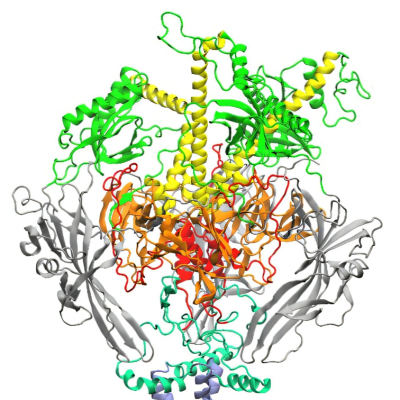Exploiting the remarkable capability of viruses to transport gene therapies past what until now has been a circulatory roadblock is at the heart of a University of Alberta-led discovery that promises to re-energize the field of genetic medicine.
John Lewis, an oncologist in the Faculty of Medicine & Dentistry and the lead author of the study describing the advance, explains that the primary obstacle to safely and effectively distributing therapeutic agents throughout the body is the liver.
“Current delivery systems are great in theory, but they have a significant flaw — they home in on the liver,” says Lewis, who is also a member of the Cancer Research Institute of Northern Alberta. “You can get them to work in a dish, but as soon as you inject a drug into a person, these technologies often fail.”
“If you’re treating a brain disease or a lung disease, you don’t want your drug to go to the liver. We need solutions that can target the right tissues and cells.”
Lewis explains that current lipid nanoparticle (LNP) drug delivery technologies are formulated with ingredients like cholesterol, which are destined to accumulate in the liver and are the reason why many proven genetic medicines — such as gene therapies, mRNA vaccines and gene-editing technologies — are eliminated from the body before reaching their targets.
In search of a delivery mechanism that bypasses the liver, Lewis has collaborated for decades with Dalhousie University virologist Roy Duncan, known for his discovery of a protein made by the unique fusogenic orthoreovirus, which has the ability to fuse cells together.
By combining this fusion protein with a modified lipid nanoparticle designed to transport therapeutic substances, the team successfully engineered a proteolipid vehicle platform, known as FAST-PLV. This platform avoids the liver, allowing therapies to more effectively target areas such as the brain and lungs. It is less toxic than current delivery platforms, while also avoiding stimulating the immune system. This means it allows for repeat dosing, which is crucial in addressing diseases requiring ongoing or multiple interventions.
To demonstrate that the new platform could deliver the genetic payload without being intercepted by the liver, Lewis’ team created a gene therapy using a protein that aids in muscle development, often associated with a particularly muscular breed of cattle known as Belgian Blues. When introduced into mice, the platform not only evaded the liver but resulted in genetically modified mice with twice as much muscle mass as their untreated counterparts. This approach could be useful for debilitating conditions such as frailty and sarcopenia.
“This platform is a plug-and-play solution, so everyone developing novel gene editing techniques and therapies for diseases outside the liver can use this platform to create their drugs,” says Lewis.
First on the agenda for Lewis and his team is a new COVID-19 vaccine set to enter Phase 2 clinical trials.
The development timeline for these further therapies is also ambitious. Lewis says trials for Stargardt’s disease could begin within the next two years, while ongoing research into cancer treatments is already underway.
“We originally focused on cancer therapies, aiming to utilize genetics as an alternative to traditional chemotherapy,” he says.
Beyond that, Lewis envisions cures for diseases like muscular dystrophy, cystic fibrosis, Alzheimer’s disease and Parkinson’s disease on the immediate horizon.
“Conceivably, this technology could allow us to cure all these horrible, debilitating, rare diseases affecting children born with these mutations,” he says.
Lewis adds that the implications of this platform extend far beyond mere advancements in delivery technology; they represent a paradigm shift in the potential for curing genetic diseases, potentially transforming the lives of millions affected by previously untreatable conditions.
“We’re just at the beginning of what this technology can achieve. With the right focus and collaboration, the sky’s the limit.”
Read the original article on University of Alberta.







